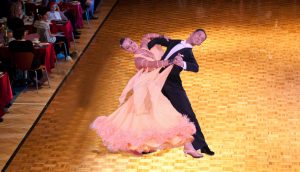North Shore Dance Society found this wonderful article telling us 6 Steps To Improving our Dancing for Your Next Competition
Most dancers want to dance as well as they can. We take lessons, practice and care for our bodies as part of doing so. Sometimes we think that preparing for a competition requires the same things, perhaps just more of each. The truth is, preparing for a competition has one additional requirement – A Plan.
PHASE 1 – The Assessment
The best preparation for any competition starts right after the last competition. This is because your self-assessment will be most relevant then.
- Give yourself a little time to relax and reflect on what you enjoyed in the competition experience before you start to focus on your performance. ~Some people only need a few hours a few for this, most people need just a day, some people need more.
~This timing certainly does not mean that you will stop reflecting on your enjoyment, it just means you will also start your planning based on what you learned. - The first thing to do is critical, but is very often forgotten. It is to honestly and clearly list everything that you did very well. ~The list could be on paper, or verbally with your partner and/or coach.
~The reason why it is important is that anything that does not get attention gets weaker over time.
~Every competitor has some strengths. Make sure that you acknowledge them and put some conscious effort into maintaining and enhancing them so they do not become weaknesses as you work on other things. - Then, list the things that felt uncomfortable to you, or did not look strong in your video. ~Once you have listed them, check which of these four areas they fall into, choreography, form, technique or style.
~Choreography – could be forgotten or awkward choreography. It could also be choreography that you had planned to change after the comp. Just do not get into a trap of blaming difficult choreography for problems that are caused by your form, technique or style, or thinking that flashier choreography will cover up problems in those areas.
~Form – is really just the word we are using here to refer to the foundational elements of technique. Balance, coordination, partnering, posture, timing, hold, and foot positions. We separate this group because without each of these elements, the next level of technique will still not be enough to make you look your best, and may not even be possible.
~Technique – is what we referring to as the specific elements of foot and leg action, shape, weight shift, body orientation, body action, power, and even floorcraft. - ~Style – includes musicality, arm-styling, presentation, audience engagement plus your own intangibles.
PHASE 2 – The Plan
4. Develop your plan.
~Issues related to form, really should be at the top of the list.
~The only thing you might want to do at the same time as focusing on form is making any adjustment in choreography, and only if it is absolutely necessary make a change. The reason to attend to choreography early is to allow you to practice your form within the choreography you will actually use – Please note that unless the choreography is awkward or inappropriate for the level of dancer, it is it is generally better to maintain your choreography while you deal with issues of form.
~Technique would be next and will reinforce good form.
~Style is very important for every level of dancer, but will rarely be the only thing in your plan, unless you are an advanced and very proficient dancer.
5. Schedule your plan
~The first part of your plan should be laser focused on addressing the top 1-2 things on your list. If you master these, and have time, then address others.
~The next part of your plan should be spent making sure that your new skills are integrated seamlessly into your routine. Start and stop as you need to, video tape yourself. Make sure all the bugs are out and transitions are smooth.
~If you have the time and inclination, you may also go back and forth between these first two phases as you master one skill, and before you start working on another.
PHASE 3 – Rounds
6. The final phase of your preparation is specific competition preparation with repetition, stamina building, and confidence building by practicing competition rounds
~Rounds are important for everyone – For your first competition, you can also start the assessment and plan noted here with a session of practice competition rounds at the point when you know your routines, feel good about your dancing.
~The more similar the rounds are to a real competition the better, so if it is set up in a studio with other couples on the floor at the same time, great!
~Even if is just with you and your partner, still do not skip the steps. Set up real competition music to play in the correct sequence, for at least 90 seconds a song — You could also have songs playing longer to allow 3-4 repeats of your routines. This really builds stamina and confidence, and makes the 90 second song of a comp feel like a breeze.
~Do your entrance and exits as you would in a competition, and if you make a mistake, continue as you would in an actual competition.
~In the day or two right before a competition, focus on your strengths and your confidence. After the competition, begin again to focus on your assessment and plan, to get ready for the next one.
Another fantastic article from Author: Miss P
North Shore Dance Society